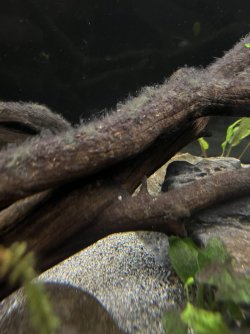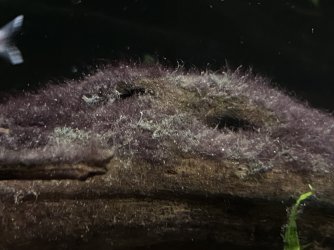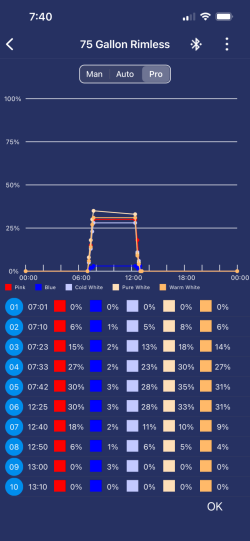powerdyne6
Fish Crazy
- Joined
- Feb 2, 2007
- Messages
- 323
- Reaction score
- 113
I have what looks to be some brown/purple algae in my 75 gallon. It is growing on the wood and plants but I have usually kept it under control manually Usually by wiping the leaves off and scrubbing the wood. There is no algae on the tank glass or substrate.
I have the Fluval Plant LED light on for about 6 to 7 hours a day with a warm up and cool down process. I fertilize with Flourish once a week at water changes.
I have a variety of plants including Java Fern, Anubius and some other stem plants plus some floaters.
What options do I have with controlling this?
Would alternating light on one day light off the next help out with this or could I just keep the light of for a few days at a time?
My place I live in gets lots of ambient light.
Thoughts?
I have the Fluval Plant LED light on for about 6 to 7 hours a day with a warm up and cool down process. I fertilize with Flourish once a week at water changes.
I have a variety of plants including Java Fern, Anubius and some other stem plants plus some floaters.
What options do I have with controlling this?
Would alternating light on one day light off the next help out with this or could I just keep the light of for a few days at a time?
My place I live in gets lots of ambient light.
Thoughts?





